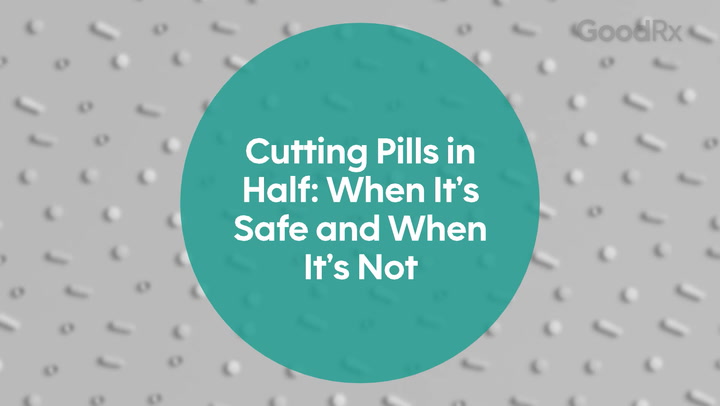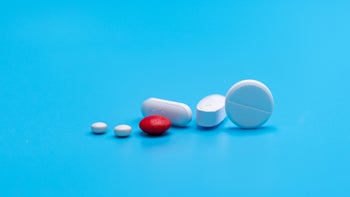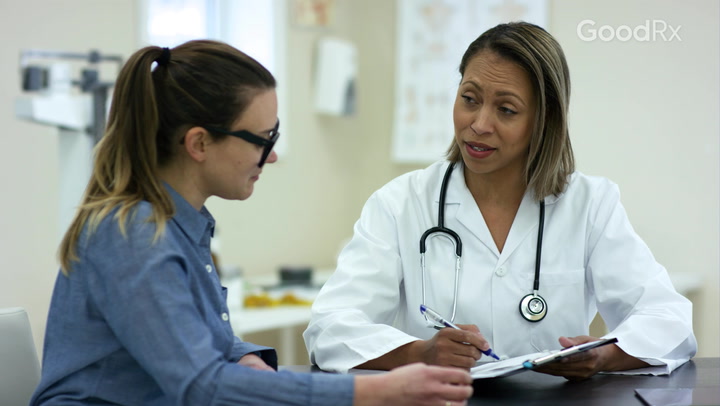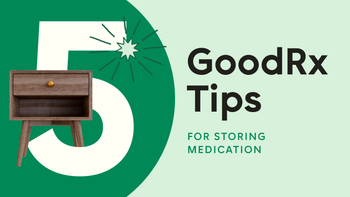
Pharmacist Answers to 6 Common Questions About Compounded Medications
Key takeaways:
Compounded medications aren’t the same as regular prescription drugs. They’re custom-made formulations that are specific to your needs. They’re usually prescribed when a medication, dose, or dosage form isn’t commercially available.
Not all pharmacies can make compounded medications, especially if it’s an injection or an eye drop. Specialized, accredited compounding pharmacies are your best bet for filling these prescriptions.
Compounded medications aren’t always covered by insurance. So be sure to discuss cost up-front. And keep in mind that you may be able to submit an insurance claim yourself if the pharmacy is unable to.

A compounded medication is a drug that’s specifically mixed and prepared for you, based on a prescription from your doctor. Similar to when you bake a cake, creating compound medications involves a recipe for mixing one or more active ingredients, each at a specified amount.
This opportunity to customize medications presents a very special advantage. It means that a medication can be made to fit your needs, whether that’s making the medication easier to take or at a specific dose. But they aren’t the same as a regular prescription drug, and you can’t get them at every pharmacy. Here, we’ll answer common questions about compounded medications to help you understand them better.
1. Why does my medication need to be compounded?
There are several reasons your healthcare provider may prescribe a compounded medication, such as an allergy you have to an ingredient or if the dosage form you need isn’t available.
Search and compare options
The medication isn’t commercially made
Most FDA-approved medications are commercially manufactured in a facility that’s registered with the FDA. These are the medications you’ll typically pick up with a prescription at your local pharmacy. But some medications aren’t available from a commercial manufacturer. This may be because they can’t be made in advance since they’re only stable for a short time. Or it may be a combination of ingredients that isn’t cost-effective or practical to submit to the FDA for approval the way most prescription medications are.
You’re allergic to an ingredient in the commercial form of the medication
When prepared as an injection, progesterone is placed in oil. But this is commercially made with sesame oil. So if you’re allergic to sesame, your healthcare provider can prescribe a compounded version that’s made with olive oil, instead.
The dosage form or dose you need isn’t available
If a medication only comes in tablets, your pharmacist may be able to compound a liquid version. Or if a medication only comes in 10 mg and 20 mg doses, but you need 1 mg, that would also be a specialty compound. This type of compounding is common with medications for children or animals.
The commercial medication is on backorder or discontinued
In most cases, it’s not legal to compound a medication that’s commercially available unless there’s a medical need. But if it becomes unavailable due to a shortage or it’s discontinued, a compounded version may be allowed. This helps make sure people can still access their medication.
2. Do you need a prescription for a compounded medication?
Most of the time. If the compound contains any prescription-only medications, you’ll need a prescription for it. Some compounded medications are made with OTC ingredients, so you may not need a prescription for those. This can depend on where the pharmacy is located, and if it’s allowed in your specific state. But if you want to submit them to your insurance, a prescription is always required.
Sometimes, your healthcare provider’s office will compound the medication in the office for you. Some providers also have compounded medications made for them to use in-office (such as during physical therapy). Most of the time, you won’t need a prescription for these instances.
3. What types of medications are compounded?
Almost all forms of commercially available medications can also be compounded. This includes:
Capsules
Tablets
Oral liquids (like Magic Mouthwash)
Suppositories
Creams, gels, and ointments
Lozenges
Injections (like TriMix)
Eye drops
Compounded medications are divided into two main groups: sterile and non-sterile. Sterile compounds are most often injections and eye drops. They have stricter laws regarding how they’re made to make sure they don’t contain any bacteria or contamination that could be harmful when they’re used.
Most other compounded medications are considered non-sterile. They should still be made in a clean, safe environment, but they don’t require the special level of care that sterile compounds do.
4. Where can I get a prescription for a compounded medication filled?
Non-sterile compounds can be made by any pharmacy that chooses to provide compounding services. But not all pharmacies do. Most major pharmacy chains will only have one or two stores in an area that offer compounding services. Independent pharmacies also often compound medications, too. It’s best to look online or call the pharmacy before you bring in a prescription that requires compounding to make sure it’s something they’re able to make.
Sterile compounds are a different story. They’ll typically need to be made by a specialty compounding pharmacy that has the equipment to make these compounds. There are also special rules and regulations a sterile compounding pharmacy has to follow.
If you’re having trouble finding a pharmacy to make your compounded medication, talk to the healthcare provider that prescribed it for you. Most providers can guide you to pharmacies that can make the compounded medications they prescribe.
5. What are the risks of taking compounded medications?
Compounded medications don’t require FDA approval and testing the same way that prescription medications do. So it’s harder to ensure that compounded medications are safe and effective. For sterile compounding, if a pharmacy doesn’t follow the proper protocols, the result could be deadly.
In 2013, after an outbreak of fungal meningitis caused by improper compounding of sterile medication, a new compounding law was passed. It created stricter protocols for pharmacies making large batches of sterile compounds to better protect the safety of people who use them.
The best way to minimize risk is to choose a reputable pharmacy to compound your medication. For example, you can look for an accreditation from the Pharmacy Compounding Accreditation Board (PCAB) or the National Association of Boards of Pharmacy (NABP). The Joint Commission Medication Compounding Certificate is another safety-focused certificate to be aware of.
Keep in mind that compounding pharmacies are also monitored by their state Board of Pharmacy. And most states require that compounding pharmacies follow certain standards in order to make medication safely.
6. Will insurance cover a compounded medication?
Sometimes, but not always. And some compounding pharmacies don’t take insurance at all. It’s best to discuss cost up-front before you have your prescription filled. It may also be worth shopping around to find the compounding pharmacy with the best price. Keep in mind that you may need to pay a little more for a higher-quality compound — cheaper doesn’t always mean better.
It may also be possible to seek reimbursement from your insurance company if you pay for your medication out of pocket. Your insurance company or the compounding pharmacy can provide you with a claim form for this. These forms often need to be signed by the pharmacist, so be sure to bring it along or ask for it when you pick up your compounded prescription.
The bottom line
Compounded medications aren’t the same as regular prescription drugs. They’re usually prescribed when a medication, dose, or dosage form isn’t commercially available. And they aren’t always covered by insurance.
Not all pharmacies can make compounded medications, especially if it’s an injection or an eye drop. Specialized and accredited compounding pharmacies are your best bet for filling these prescriptions.
Why trust our experts?


References
Accreditation Commission for Health Care, Inc. (n.d.). Compounding pharmacy accreditation.
Carvalho, M., et al. (2022). The role of pharmaceutical compounding in promoting medication adherence. Pharmaceuticals.
Federation of State Medical Boards. (2020). White paper on compounding of medications by physicians.
Goldman, T. R. (2014). Health policy brief: Regulating compounding pharmacies. Health Affairs.
National Association of Boards of Pharmacy. (2020). Compounding pharmacy.
Teshome, B. F., et al. (2014). How gaps in regulation of compounding pharmacy set the stage for a multistate fungal meningitis outbreak. Journal of the American Pharmaceutical Association: JAPhA.
Jackson, L.M., Parker, R.M. & Mattison D.R. (Eds).(2020). 2. An overview of compounding. The Clinical Utility of Compounded Bioidentical Hormone Therapy: A Review of Safety, Effectiveness, and Use.
The Joint Commission. (n.d.). Medication compounding certification.
U.S. Pharmacopeia. (n.d.). General chapter <797> Pharmaceutical compounding – sterile preparations.
U.S. Pharmacopeia. (n.d.). Recognition of USP compounding standards.
Was this page helpful?
Related Articles
Browse medications
View AllResearch prescriptions and over-the-counter medications from A to Z, compare drug prices, and start saving.

























